Chapter 10.9: Baroque Sculpture
Baroque sculpture is associated with the Baroque cultural movement in 17th-century Europe. In Baroque sculpture, groups of figures assumed new importance, and there was a dynamic movement and energy of human forms—they spiraled around an empty central vortex or reached outwards into the surrounding space. Baroque sculpture often had multiple ideal viewing angles and reflected a general continuation of the Renaissance’s move away from relief to sculpture created in the round . They were typically designed to be placed in the middle of a large space; for example, elaborate fountains such as Bernini’s Fontana dei Quattro Fiumi (Rome, 1651) or those in the Gardens of Versailles were a Baroque specialty.
A great deal of Baroque sculpture added extra-sculptural elements; for example, concealed lighting, water fountains, or fused sculpture and architecture that created a transformative experience for the viewer . Artists saw themselves as working in the classical tradition and admired Hellenistic and later Roman sculpture.
Bernini
Gian Lorenzo Bernini was the dominating figure of the age. Bernini’s career began under his father, Pietro Bernini, a Florentine sculptor of some talent who ultimately moved to Rome. The young prodigy worked so diligently that he earned the praise of the painter Annibale Carracci and the patronage of Pope Paul V and soon established himself as a wholly independent sculptor.
He was strongly influenced by his close study of the antique Greek and Roman marbles in the Vatican, and he also had an intimate knowledge of High Renaissance painting of the early 16th century. His study of Michelangelo is revealed in the St. Sebastian (c. 1617), carved for Maffeo Cardinal Barberini, who was later Pope Urban VIII and Bernini’s greatest patron.
Bernini’s early works attracted the attention of Scipione Cardinal Borghese, a member of the reigning papal family. Under his patronage, Bernini carved his first important life-size sculptural groups. The series shows Bernini’s progression from the almost haphazard single view of Aeneas, Anchises, and Ascanius Fleeing Troy (1619) to strong frontality in Pluto and Proserpina (1621–22) and then to the hallucinatory vision of Apollo and Daphne (1622–24), which was intended to be viewed from one spot as if it were a relief. In his David (1623–24), Bernini depicts the figure casting a stone at an unseen adversary. Several portrait busts that Bernini executed during this period, including that of Robert Cardinal Bellarmine (1623–24), show a new awareness of the relationship between head and body and display an ability to depict fleeting facial expressions with acute realism.
These marble works show an unparalleled virtuosity in carving that obdurate material to achieve the delicate effects usually found only in bronze sculptures. Bernini’s sensual awareness of the surface textures of skin and hair and his novel sense of shading broke with the tradition of Michelangelo and marked the emergence of a new period in the history of Western sculpture.
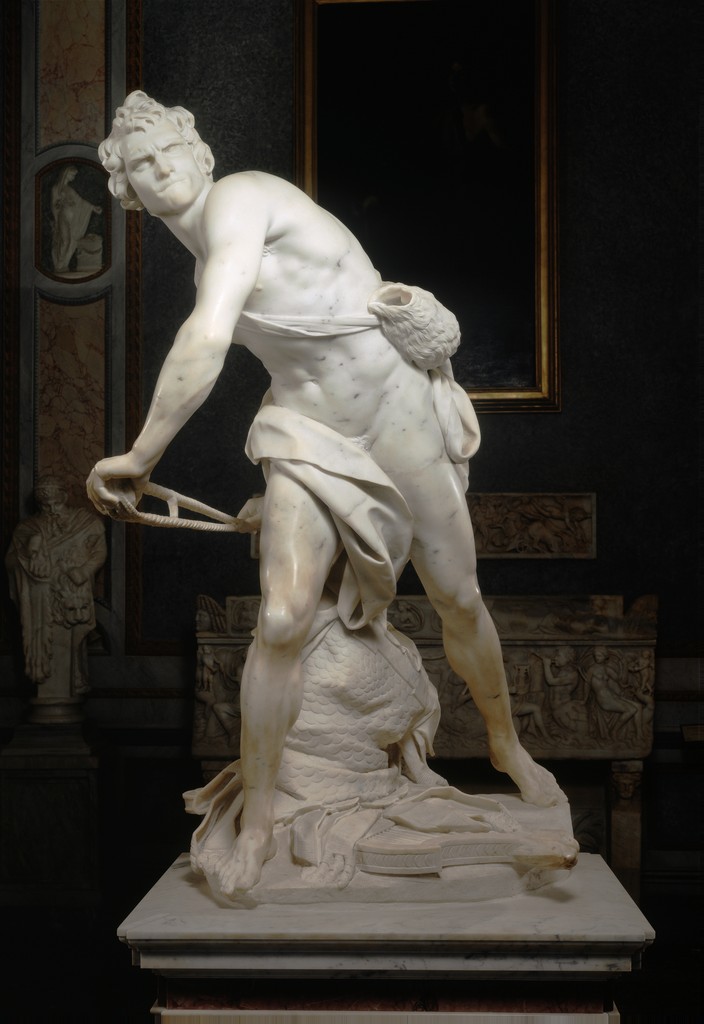
Images and Videos
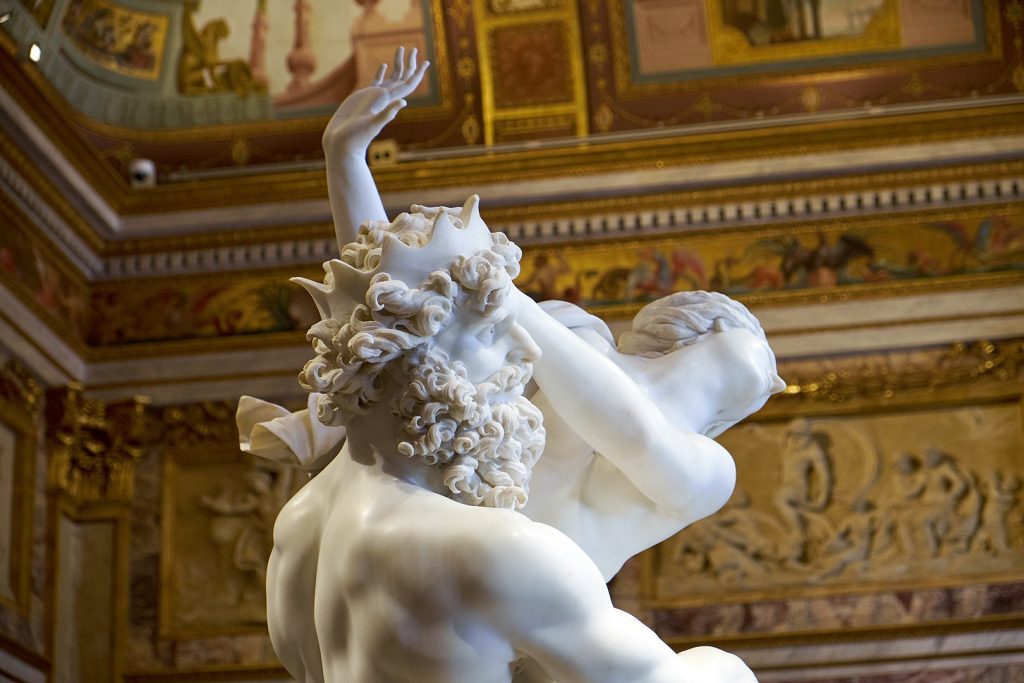
Gian Lorenzo Bernini, Pluto and Proserpina (or The Rape of Proserpina) (4:06)
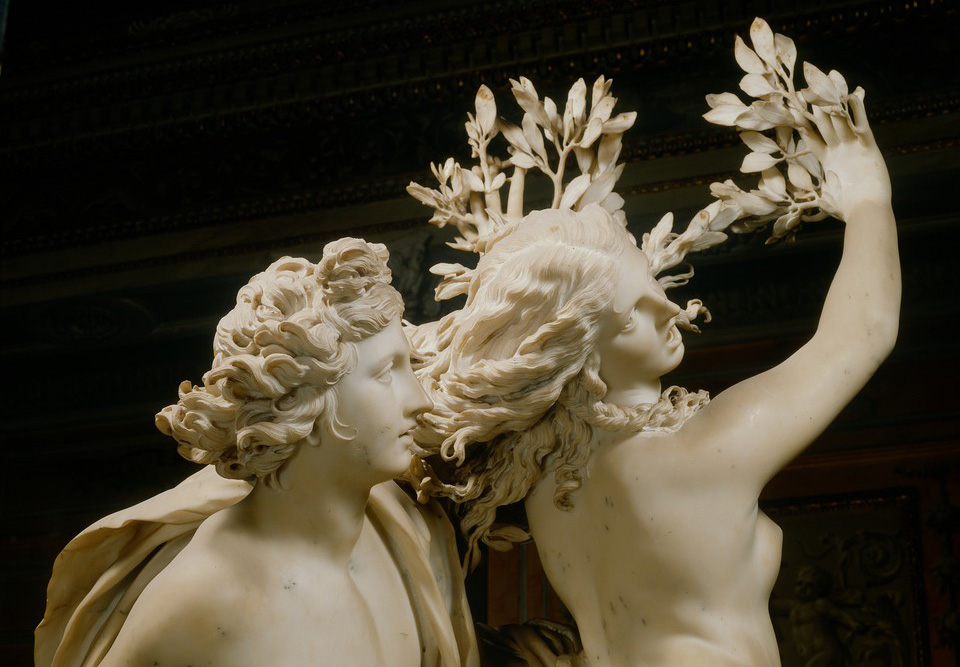
Bernini, Apollo and Daphne (5:32)
Bernini’s most spectacular public monuments date from the mid-1640s to the 1660s. The Fountain of the Four Rivers in Rome’s Piazza Navona (1648–51) supports an ancient Egyptian obelisk over a hollowed-out rock, surmounted by four marble figures symbolizing four major rivers of the world.
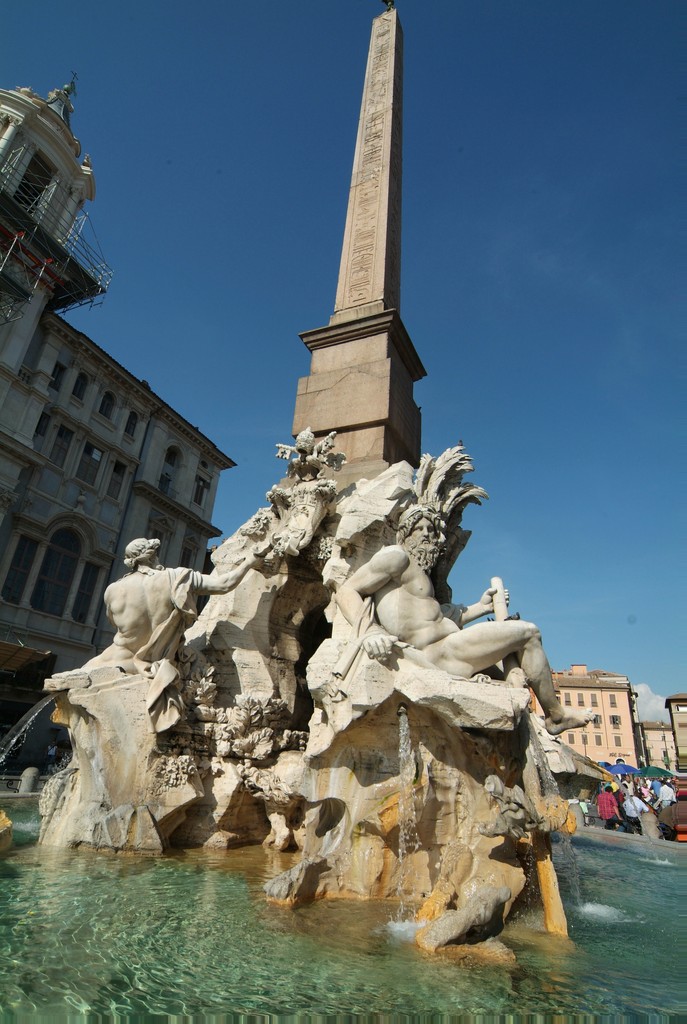
This fountain is one of his most spectacular works. The greatest single example of Bernini’s mature art is the Cornaro Chapel in Santa Maria della Vittoria, in Rome, which completes the evolution begun early in his career. The chapel, commissioned by Federigo Cardinal Cornaro, is in a shallow transept in the small church.
Its focal point is his sculpture of The Ecstasy of St. Teresa (1645–52), a depiction of a mystical experience of the great Spanish Carmelite reformer Teresa of Ávila. In representing Teresa’s vision, during which an angel pierced her heart with a fiery arrow of divine love, Bernini followed Teresa’s own description of the event. The sculptured group, showing the transported saint swooning in the void, covered by cascading drapery, is revealed in celestial light within a niche over the altar, where the architectural and decorative elements are richly joined and articulated.
At left and right, in spaces resembling opera boxes, numerous members of the Cornaro family are found in spirited postures of conversation, reading, or prayer. The Cornaro Chapel carries Bernini’s ideal of a three-dimensional picture to its apex. The figures of St. Teresa and the angel are sculptured in white marble, but the viewer cannot tell whether they are in the round or merely in high relief. The natural daylight that falls on the figures from a hidden source above and behind them is part of the group, as are the gilt rays behind.
The Ecstasy of St. Teresa is not sculpture in the conventional sense. Instead, it is a framed pictorial scene made up of sculpture, painting, and light that also includes the worshiper in a religious drama.
Image and Video
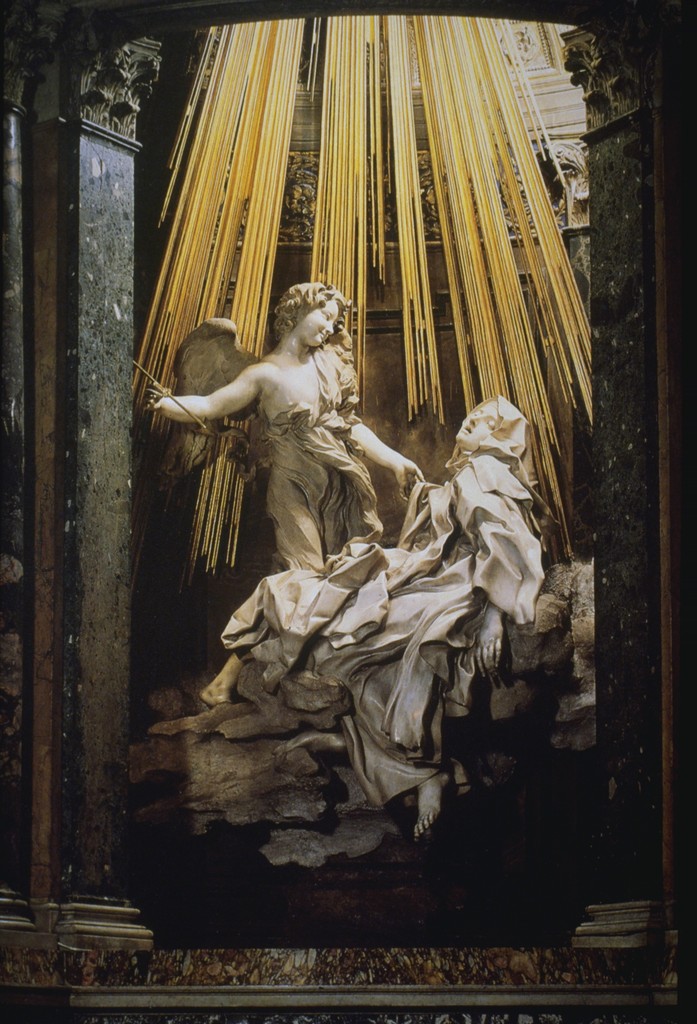
Bernini, Ecstasy of Saint Teresa (7:33)
Media Attributions
- Figure 1. Gian Lorenzo Bernini, David. Sculpture in white marble, ca. 1623-24 (Image source: SCALA, Florence/ART RESOURCE, N.Y. via Artstor. Used with permission, for education use only)
- Figure 2. Gian Lorenzo Bernini, Pluto, and Proserpina detail view. Sculpture in marble, ca. 1621-2 (Image source: User “JamesNarayanan”/Wikimedia Commons) is licensed under a CC BY-SA (Attribution ShareAlike) license
- Figure 3. Gian Lorenzo Bernini, Apollo and Daphne; detail of busts. Sculpture in marble ca. 1622-1624 (Image source: SCALA, Florence/ART RESOURCE, N.Y. via Artstor. Used with permission, for education use only)
- Figure 4. Gian Lorenzo Bernini, Fountain of the Four Rivers, 1648-1651, marble (Piazza Navona, Rome, Italy; Image source: Shmuel Magal, via Artstor. Used with permission, for education use only)
- Figure 5. Gian Lorenzo Bernini, Ecstasy of Saint Teresa, 1645-1652, marble. (Santa Maria della Vittoria, Rome; Image source: Art History Survey Collection via Artstor. Used with permission, for education use only)
Candela Citations
- Boundless Art History: Sculpture of the Baroque Period. Provided by: Lumen Learning. Retrieved from: https://www.collegesidekick.com/study-guides/boundless-arthistory/sculpture-of-the-baroque-period. License: CC BY-SA: Attribution-ShareAlike
- Gian Lorenzo Bernini, Pluto and Proserpina (or The Rape of Proserpina). Authored by: Dr. Steven Zucker and Dr. Beth Harris. Provided by: Smarthistory. Retrieved from: https://smarthistory.org/bernini-pluto-and-proserpina/. License: CC BY-NC-SA: Attribution-NonCommercial-ShareAlike
- Gian Lorenzo Bernini, Ecstasy of Saint Teresa. Authored by: Dr. Beth Harris and Dr. Steven Zucker. Provided by: Smarthistory. Retrieved from: https://smarthistory.org/bernini-ecstasy-of-st-teresa/. License: CC BY-NC-SA: Attribution-NonCommercial-ShareAlike

